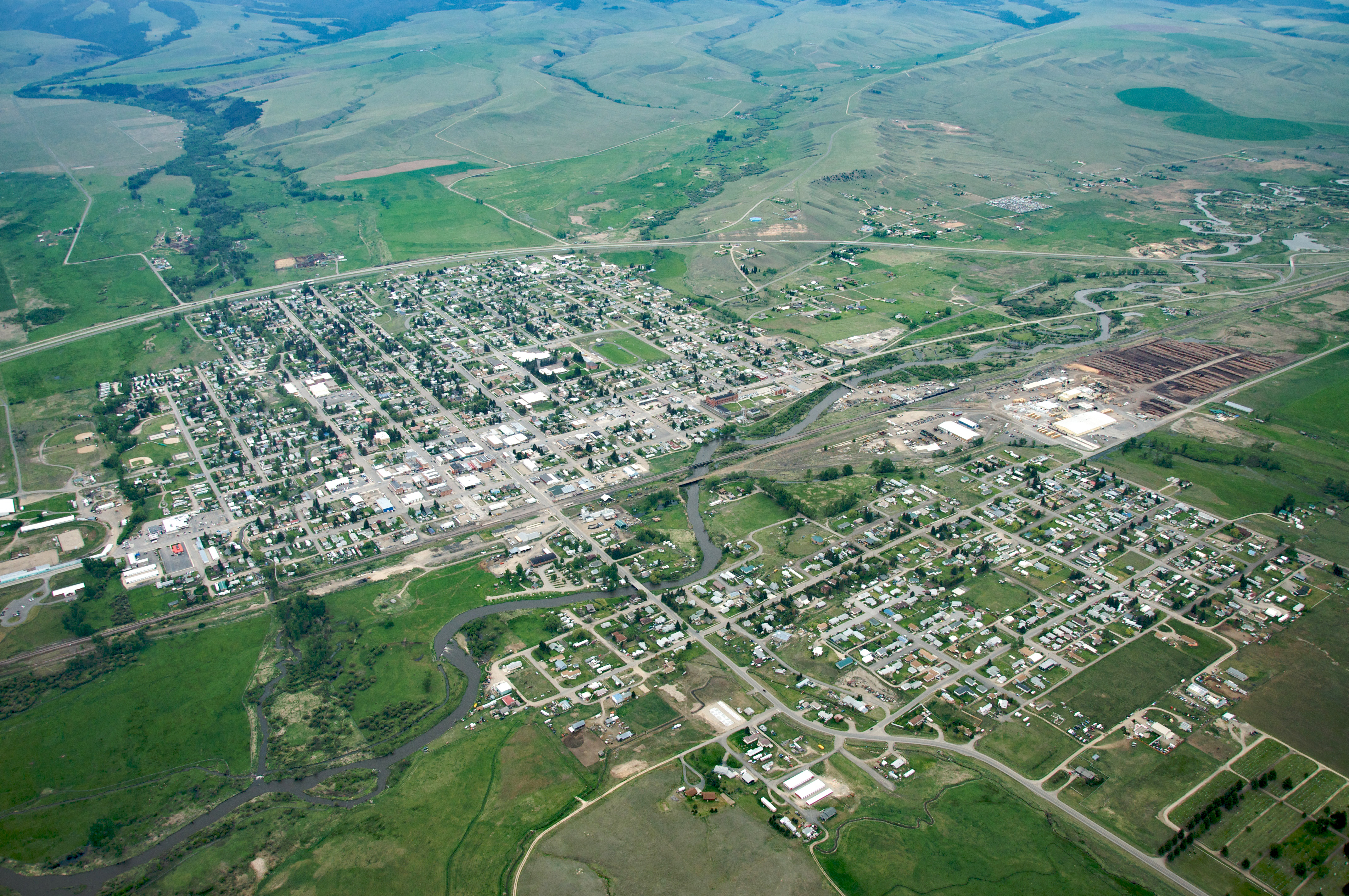Deer Lodge and the Deer Lodge Valley
 The Beginnings of Montana’s Cattle Industry by Patrick Shea
The Beginnings of Montana’s Cattle Industry by Patrick Shea
For travelers looking for a less-than-typical destination in the treasure state, an excursion through the Deer Lodge Valley is a tour through time to some of Montana's most formative moments.
An estimated three billion years ago, the valley, now at about 4,600 feet, was at the bottom of a shallow inland sea. Over time, as the waters receded and disappeared, sediments eroding off the mountains to the east and west of the valley added minerals to the leftover compost mix. These fertile soils make for the very viable ranching and farming economy of today.
The valley’s highlands, the Flint Creek Range to the west and the Boulder Mountains on the east, have historically been mineral-rich. When intrusions of volcanic magma rose from the earth’s mantle and mixed with sedimentary rocks, a contact zone was created. It is through this chemical process that precious metals were formed. Silver and gold, two of the elements found in these uplifts, brought prospectors to the region.
Just 16 miles south of Deer Lodge, the quiet hamlet of Warm Springs is home to the Montana State Hospital and the mostly unknown but important, Warm Springs Mound. At 40 feet in height, with steam billowing up like smoke, the behemoth warm spring resembled an Indian lodge from afar. The lightly salted water emanating out onto the fields kept nutritious grasses green year-round and attracted countless herds of white-tailed deer and elk.
To Native Americans, it was Soo-ke En Carne (The Lodge of the White-tailed Deer), later, French trappers translated it as La Loge Du Chevreuil (The Deer Lodge). Lastly, the pioneers snipped it down to Deer Lodge.
In September 1831, while exploring the valley, Warren Ferris, a cartographer, noted seeing 100 Pend Oreilles lodges and “three thousand horses of every variety of size and colour.” He wrote that although the area was abundant in deer and elk, bison are “seldom found in this country.” This was a favorite camping place for the Nez Perce, Flathead, Pend Oreilles, and Yakima tribes. Here, the hunters readied themselves to follow the road to the Buffalo Country east of the Continental Divide.
Near the end of the 19th century, this was a site of great significance in Montana’s formative years both before and after statehood. A former fur trapper named Johnny Grant settled here in 1857. Trading cattle with travelers on the Oregon trail and eventually amassing an enormous herd of open-range cattle. His operation served as a crucial food source during an early gold rush in the treasure state. Grant sold the ranch and his herd to Conrad Kohrs for $19,000 in 1867.
Kohrs, a German immigrant who came to Montana during the gold rush, found more money was to be made in selling food to fortune seekers than in the prized mineral that was attracting them. One industry paved the way for another. By the 1880's, the herd at the Grant-Kohrs ranch grew to 50,000 head of cattle grazing over 10 million acres. Kohrs' business had grown into one of the nation's major beef suppliers, selling not only to miners in the West but to American's back across the Mississippi River as well. At peak production, the ranch was shipping 10,000 head to Chicago's Union Stock Yards annually.
As word got out of Kohrs’ surmounting wealth, lore began to form around the deep-pocketed cattle baron. He was dubbed the “Montana Cattle King” by the populous, and this fame helped propel him into local politics. Kohrs was elected to the Constitutional Convention in 1889, playing a role in defining the freedoms and laws upheld in Montana to this day.
The Grant-Kohrs Ranch NHS is accessible from Deer Lodge's main street and features preserved historic buildings and interpretive tours. Just down the road sits the Old Montana Prison Museum. Built from the ground up by its inaugural inmates for 100 years, it was the final destination for outlaws and vigilantes of the old Montana Territory. A must-see for car enthusiasts, the Montana Auto Museum has over 160 cars from America's past on display… everything from classic Chevys and muscle cars to a high-wheeled buggy-style Schacht. As a further testament to the collection's quality, it was listed in the top 10 car museums nationwide by USA Today.
Celebrity-wise, Betty Crocker (the famous recipe writer), as well as Phil Jackson, who coached the Chicago Bulls during the Michael Jordan era, were from here. With a population of about 3,000, the town is the valley’s historical and cultural epicenter.
On a fun note, to quote Kim Briggeman of the Missoulian from his article Big Sky Ramblings: Warm Springs Mound Gurgles With History 12-23-2019.
Today, on Interstate 15 and 90, travelers top a pass called Deer Lodge into the Deer Lodge Valley to get to the town of Deer Lodge, crossing Warm Springs Creek and see the Warm Springs Mound at the Warm Springs village. Go have a look for yourself!
Patrick Shea is a University of Montana graduate student pursuing a master’s degree in Environmental Sciences & Natural resource Journalism. He is also the editor of UM’s This is Montana program.
